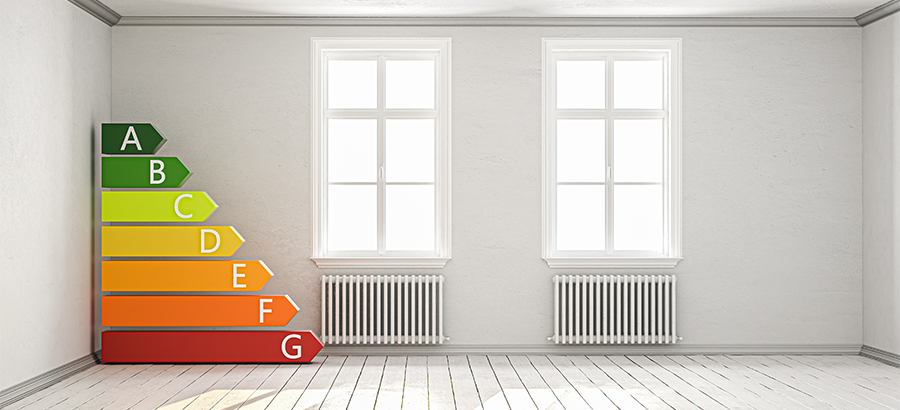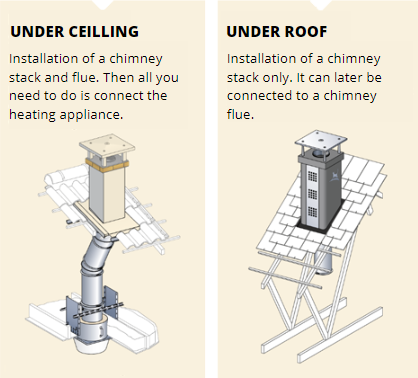Buying property: what should you check when it comes to heating?
If you're thinking of buying an old house, don't just ask about the heating system, the date the main heating system was installed and the energy bill for the last year of consumption. The heating system deserves attention, and perhaps even investigation.

The heating and energy performance of your home is not always an essential search factor. And yet...
This charming house with its pretty exterior caught your eye, it's the neighbourhood you've been dreaming of, the proximity to shops and schools is a real plus, and at this price, it's a bargain. In short, this house ticks all the major boxes!
And in the excitement of the moment, there is sometimes a tendency to downplay certain points... Like the performance of the heating system, for example, which is far from being the most important point for future buyers, with the location, price and condition of the property coming well ahead.
You may say that there is no such thing as the perfect house. True, but at a time when we all need to make the energy transition, when energy sobriety is essential, and when the energy landscape is being turned upside down by global imbalances, the energy performance criteria for a home should be taken into account, at least to avoid any unpleasant surprises.
Here are the points to bear in mind when considering buying a pre-owned individual house.
1 - What energy is used in the house?
Among the questions most frequently asked during visits, "What do you heat your home with?" is certainly one of the top 10. And that’s perfectly normal, since whether it’s wood, gas, oil, electricity, heat pumps, geothermal, solar or any other energy source, we all have a greater or lesser affinity with these energies. Personal experience, word of mouth, the ease/difficulty of each, the way we see ourselves and our personal convictions have all shaped our position.
On a more objective level, fossil fuels are no longer in vogue. An oil-fired boiler, for example, can still be maintained and repaired, but replacement with an equivalent system is now prohibited. So this is very likely to be an expense you'll need to anticipate if the property you’re visiting is heated by oil.
2 - How old is the heating system?
After the type of energy used, this is a second point to consider, as the date of installation often provides some clues about the technology of the equipment (condensing, low-temperature, etc.), its level of energy performance, and perhaps the type and generation of heat distributors to which it is connected in the house (convectors or cast-iron radiators, for example, but also the presence or absence of thermostatic valves, etc.).
A recently installed or replaced heating system can reassure a buyer. In this case, check with the seller or his agent that the work was carried out according to the rules by a qualified installer for this type of work, with invoices and certificates to prove it.
3 - Has the heating system been properly maintained?
Boiler maintenance contracts, proof of chimney sweeping, heat pump maintenance invoices, service reports, etc. Anything that can tell the customer more about the condition and monitoring of the heating system should be included in the file.
This information is essential unless, of course, the buyer plans to renovate the entire property and keep nothing of the old.
As a reminder, a chimney flue must be swept twice a year and a boiler checked by a professional once a year. All this must be proven by certificates that the seller must be able to provide.
The CAT-CHECK service created by Cheminées Poujoulat and made available to professionals makes it possible to register all the information relating to an installation: history of interventions, characteristics of the heating system, contact details of the installer, etc.: a complete identity card which simplifies the monitoring of installations and guarantees users accurate information.
4 - Is the heating system (easily) replaceable?
If you need to change your heating system, it's worth knowing what's involved before you start:
- .Nature of the work involved (for example: removing an old tank, lining a pipe, adding a drain, cost of the appliance, etc.),
- .Duration of the work, as the season in which the work is carried out can have an impact on the comfort of future occupants, and even on feasibility,
- .Total cost of the work.
That's why a visit to the site by a qualified professional is highly recommended. He's the only person who can assess the scale of the job. In addition, the estimate provided by the installer will make it possible to include this expense in the total price, and possibly justify a price reduction in the purchase offer made to the seller.
This appointment upstream is essential in the process of applying for financial assistance. Depending on the work involved, the buyer's income, the age of the house and other factors, financial assistance may be granted.
Be sure to take all the necessary steps to apply for funding before starting any work.
5 - Is there a supplementary heating system in the house?
In a home, being able to rely on different energies to produce heating and domestic hot water is a considerable advantage. This combination is often a winning choice in the short, medium and long term, and even more so in the current context of highly volatile energy prices.
This energy mix will give you greater control over your spending by adjusting according to your needs, and even according to fluctuations in energy prices.
In this area, wood-burning appliances (stoves, inserts, closed fireplaces, etc.) are an ideal complement. Widely used in France, they are popular with homeowners because of the thermal comfort they provide, their simplicity of use, the price and availability of fuel, and the wide choice of models and technologies on offer.
Wood-burning appliances are a safe choice, provided they are recent (after 2005), are not open fires, and have been properly installed, maintained and used.
6 - Is there an existing flue (for a future wood burner)?
This information should not be missed, as it is a considerable asset for both the house and the buyer.
What is a pending solution?
In smoke engineering, this is a flue reservation for the purpose of easily installing a wood-burning appliance at a later date for secondary or main heating (with the AIRWOOD hot air recovery and distribution system, for example).
In practical terms, this solution can be:
- Under the ceiling: the "pre-installed" system includes a chimney stack and a flue. All you need to do is make the connection to the appliance.
- Installed under the roof: only the chimney stack is installed on the roof. All that remains is to connect it to a chimney flue.

Houses with this type of reservation can be fitted with another source of heat without major work.
7 - What is the value of home insulation?
It's always worth remembering that even high-performance heating cannot make up for the shortcomings of poor insulation. Poor thermal insulation will lead to either discomfort or high energy bills, or... both.
That's why the building envelope needs to be examined from the floor to the attic, via the walls and openings!
Energy Performance Diagnostic, is a tool that can be used to guide customers in this respect. This is a complete energy assessment of the property, carried out by an independent qualified professional at the seller's request. It gives an overall rating from A to G for the property's energy consumption and greenhouse gas emissions.
The closer the rating is to A, the better the energy performance of the home. Homes with an F or G rating are now considered to be energy wasters.
What does the Energy Performance Diagnostic say?
It assesses the general condition of the property, its thermal characteristics and its heating, hot water production, ventilation, cooling and lighting equipment. Non-compliance of the electrical installation may also be highlighted in this audit, with varying degrees of impact on the heating system...
On the basis of these findings, the professional will make proposals for work to improve the home's performance.
8 - Is the heat pump installed in the garden unaesthetic?
This has nothing to do with performance, but you're put off by the aesthetics of the heat pump... Don't worry, there are solutions for partially or fully covering these technical modules installed outside.
OUTSTEEL heat pump covers can be used to cover up heat pumps located high up, at the foot of a wall or far away from a wall. There are currently 6 models in the collection, divided into 3 families (full, partial and cap), and they can all be fully customised. So you can add your own personal touch to your new property.

Anything else?
There are obviously other points to consider, which will have an influence on the quality of the heating and the well-being of the occupants:
- .The orientation of the house and the natural (and free!) supply of heat from the sun's rays. This is especially true if you plan to install solar panels on the roof,
- .The quality of ventilation in the house, which can contribute to the smooth operation of heating appliances... and to indoor air quality,
- .The region in which you plan to buy... Exposure to the cold is obviously not the same whether you live in the north of France or the south.
Now you're ready for your next visit!











